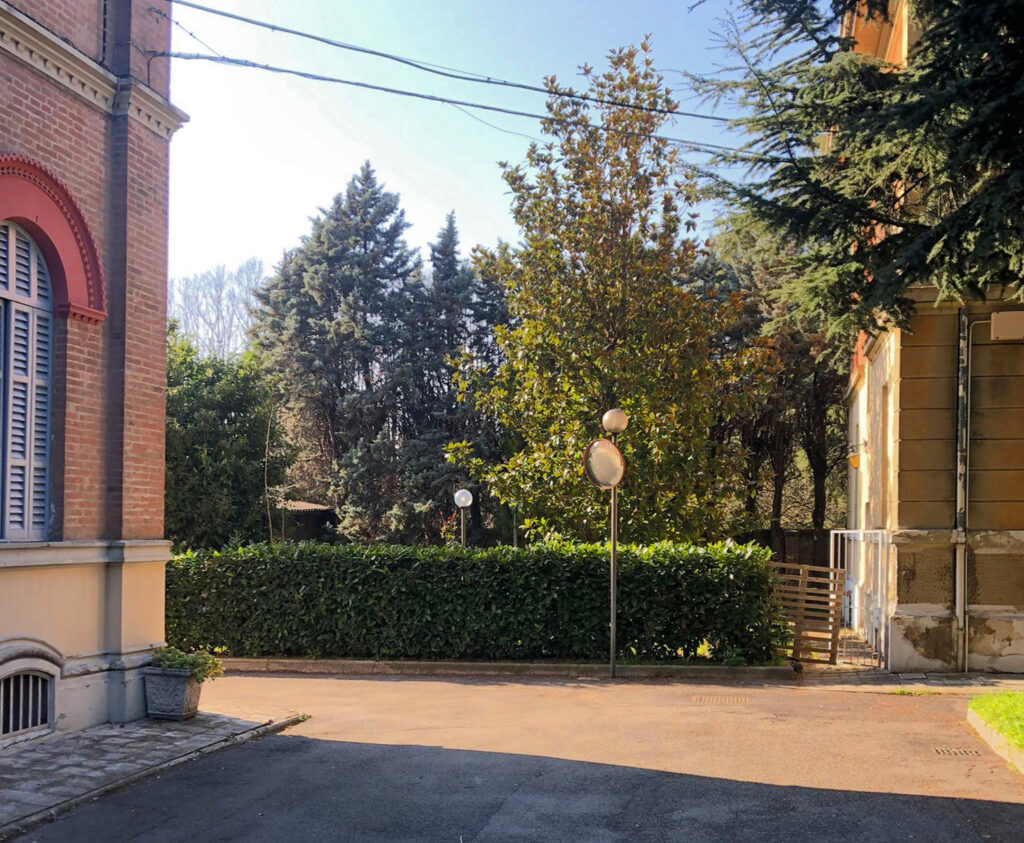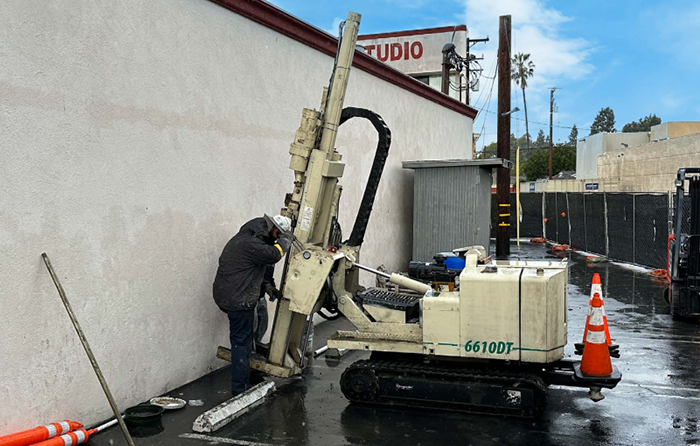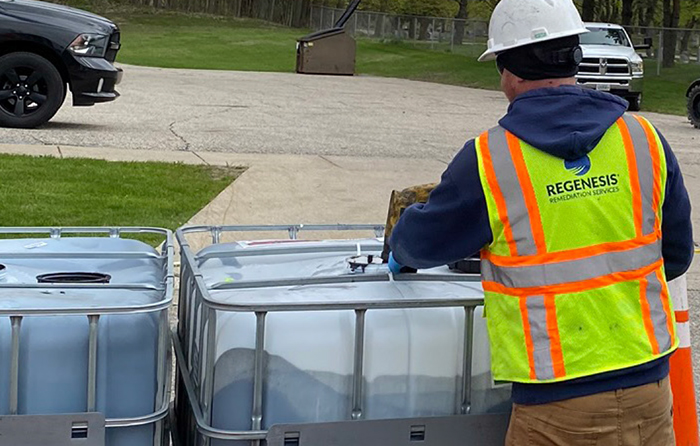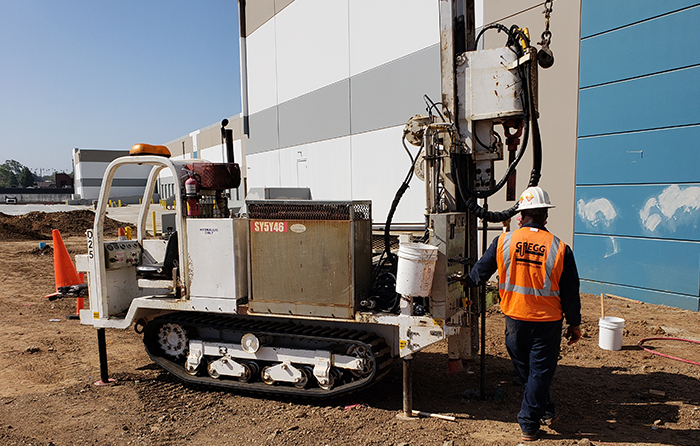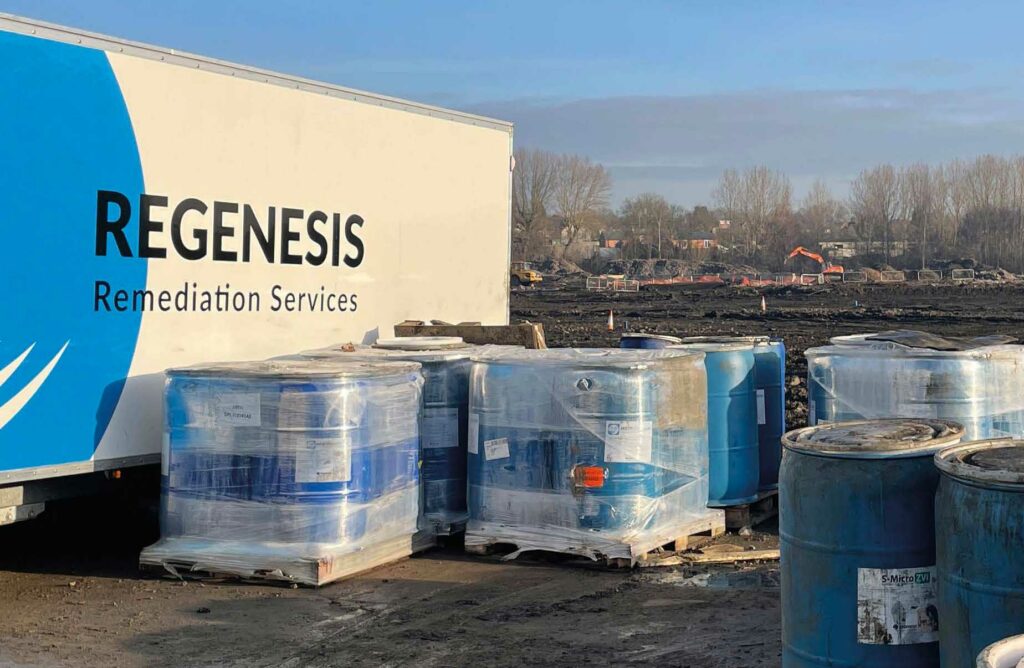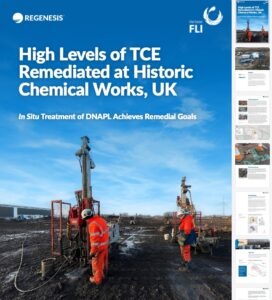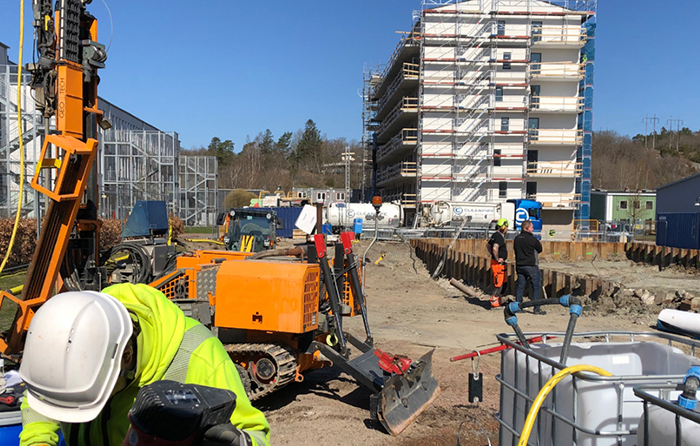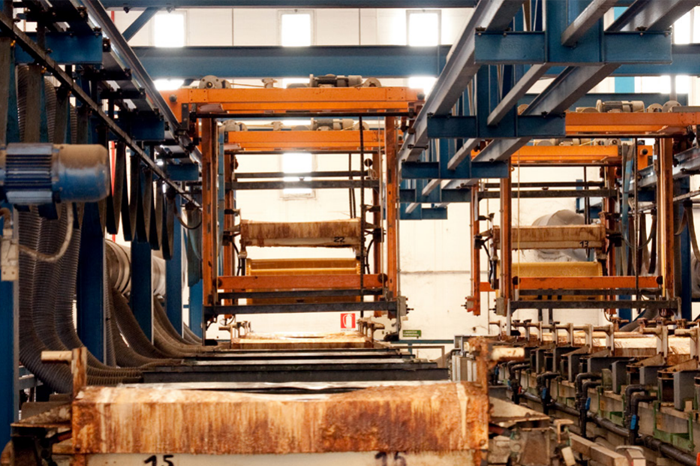Advanced In Situ Barrier Treatment Secures No Further Action
S-MicroZVI and PlumeStop drive multi-year ISCR treatment success, meeting stringent regulatory levels
Case Study Highlights:
-
Successful groundwater treatment for TAUW in a church oratory garden in Italy
-
PCE reduced to below regulatory target without any VC build-up, resulting in No Further Action (NFA)
-
Simultaneous remediation using advanced colloidal technologies enhanced the chemical degradation and sorption processes, optimizing treatment efficacy.
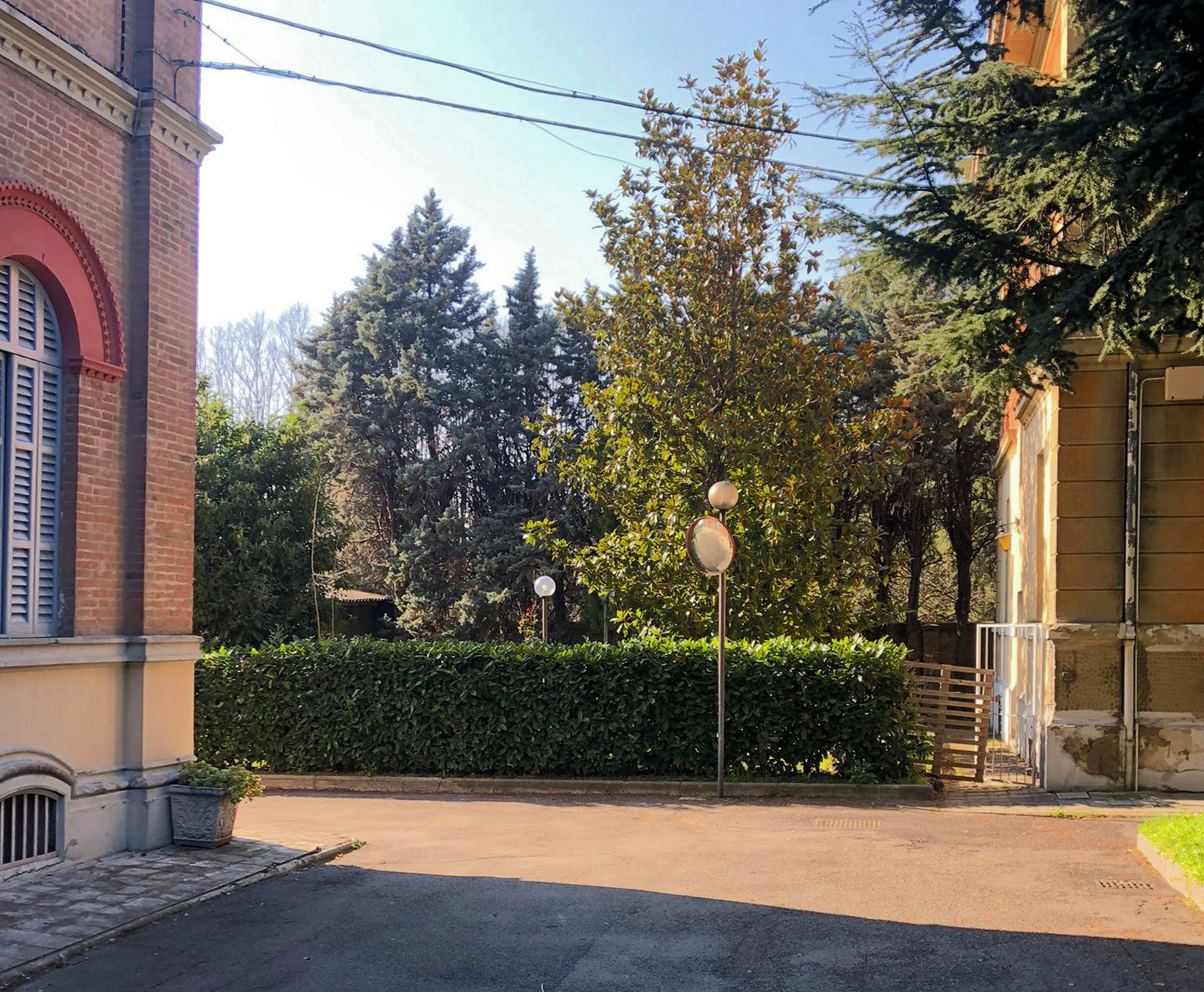
A vacant industrial site in an urban area in Northern Italy, contaminated by total petroleum hydrocarbons (TPH) from underground storage tanks, was effectively remediated using PetroFix colloidal activated carbon technology. The project required substantial and rapid reductions of TPH to allow for planned site redevelopment. Following the application, significant contamination reduction was achieved within months, meeting stringent regulatory standards. These results highlight the utility of PetroFix in complex, urban environments requiring rapid and non-disruptive remediation solutions.
Rapid Elimination of Chlorinated Solvents
Case Study Highlights:
-
Combined approach using 3 REGENESIS remediation products resulted in >99% reduction in CVOC concentrations
-
90% reduction goal achieved within 4 months post-application
-
Ongoing monitoring indicates the continued effectiveness of the treatment, with additional reductions expected in the following months
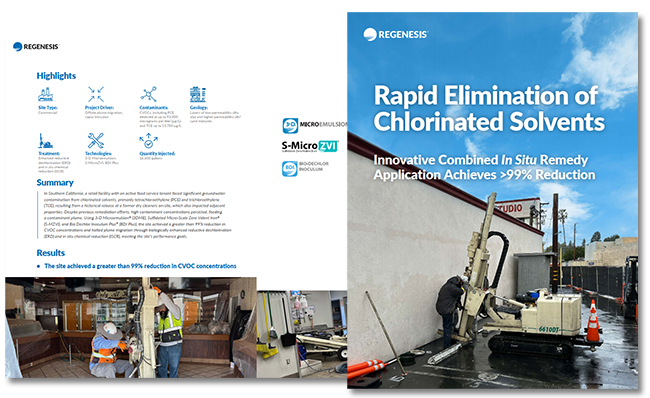
In Southern California, a retail facility with an active food service tenant faced significant groundwater contamination from chlorinated solvents, primarily tetrachloroethylene (PCE) and trichloroethylene (TCE), resulting from a historical release at a former dry cleaners on-site, which also impacted adjacent properties. Despite previous remediation efforts, high contaminant concentrations persisted, feeding a contaminant plume. Using 3-D Microemulsion® (3DME), our sulfidated micron-Scale ZVI : S-MicroZVI® , and Bio Dechlor Inoculum Plus® (BDI Plus), the site achieved a greater than 99% reduction in CVOC concentrations and halted plume migration through biologically enhanced reductive dechlorination (ERD) and in situ chemical reduction (ISCR), meeting the site’s performance goals.
Challenging Fast-Moving, High Concentration Chlorinated Solvent Plume Effectively Treated
Case study highlights
A permeable reactive barrier installed using advanced colloidal technologies demonstrates pilot test’s effectiveness treating a fast-moving, high-concentration chlorinated solvent plume in groundwater:
-
Within a month of the application, the highest concentrations were reduced by 98 percent.
-
PlumeStop and S-MicroZVI co-injected barrier treats CVOCs for >3 years in high-mass-flux aquifer
-
Additional site design testing used passive flux samplers to better understand contaminant mass flux
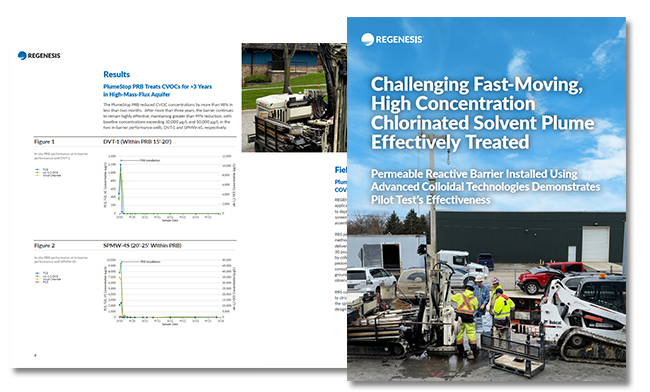
Hamp, Mathews & Associates, Inc. (HMA), working on behalf of EGLE, collaborated with REGENESIS to develop a remedial approach to address the contaminant plume. Following data review and modeling, a sorption-ERD approach was selected for implementation in a field-scale test, using the following technologies applied in an in situ permeable reactive barrier (PRB).
In this sorption-ERD approach, PlumeStop® slows the speed of contaminants (i.e., mass flux) entering a barrier, increasing the time available for the added amendments to fully reduce these contaminants into non-toxic end products such as ethene, ethane, carbon dioxide, and chloride before they leave the PRB. In combination, these remedialtechnologies create a highly reactive zone of biogeochemical reduction that can address plumes with high contaminant mass flux.
Remediation of TCE Plume Speeds Sale of Brownfield Site
Case study highlights
At a former manufacturing site in Fullerton, California, a trichloroethylene (TCE) plume in groundwater prevented the sale of the brownfield site despite past remediation efforts, including excavation and thermal treatment. A combined remedy changed that: the combination of a large-diameter auger (LDA) excavation and injection of 50,000 gallons of
S-MicroZVI® has resulted in:
-
98.5% average reduction in TCE concentrations, facilitating the property’s sale and redevelopment
-
Through 4.5 years of monitoring, TCE remains at 99.7%, reduced in the treatment zone, confirming the remediation’s long-term effectiveness.
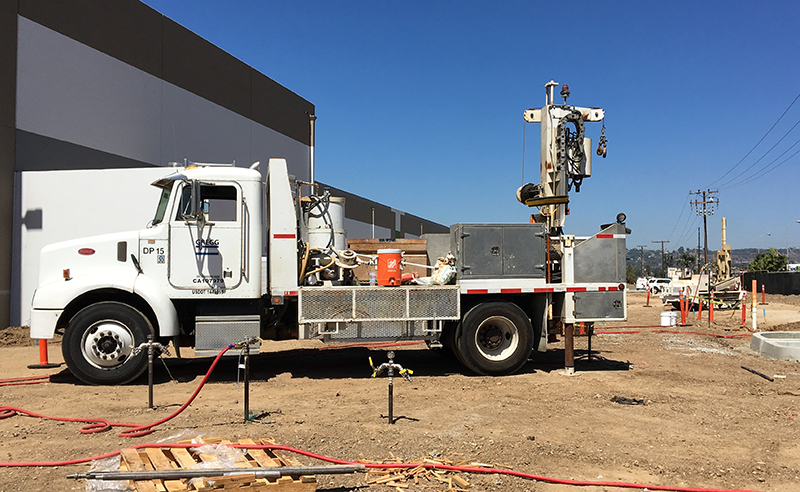
This case study reviews a former manufacturing site in Fullerton, CA, where a trichloroethylene (TCE) plume contaminated the groundwater and prevented sale of the brownfield site. REGENESIS designed an injection plan using micronscale Zero Valent Iron (ZVI) due to its proven ability to effectively reduce contaminant levels within a subsurface environment. In order to complete the remediation and move forward with the sale, Hargis + Associates worked with REGENESIS to develop an in situ chemical reduction (ISCR) design to address the plume. Regulatory limits on pounds per square inch (psi) were enforced for all injections. REGENESIS, Hargis + Associates, and Gregg Drilling worked closely with the regulatory agency to ensure that the remediation and injection of the ZVI would be completed at a low pressure.
High levels of TCE Remediated at Historic Chemical Works
Award-winning In Situ Remediation of DNAPL Achieves Remedial Goals
Case study highlights:
- Once considered one of the most environmentally contaminated sites in the UK
- REGENESIS designed and delivered a suitable and pragmatic in situ groundwater solution on behalf of Vertase FLI for a portion of the site, fitting in with the wider remediation works and site redevelopment programme.
- Combined ERD and ISCR treatment using S-MicroZVI® and 3-D Microemulsion®
- 90% TCE mass removal achieved in 12 months, exceeded the remedial goal, allowing the site redevelopment to continue apace.
- Multiple lines of evidence show ongoing, long-term reductive dechlorination, without VC stall.
- Winner of the Brownfield Award 2024 ‘Best Application of Remediation Technologies‘
Or watch the 5-min project video with site footage and interviews
PlumeStop & S-MicroZVI Barrier Reduces Chlorinated VOCs by 95% in 1 Month
Case study highlights:
- Integrated treatment protects newly constructed residential buildings from vapour risk
- The integrated treatment approach combined in situ chemical reduction (ISCR) and sorption & biodegradation in an injected permeable reactive barrier (PRB)
- The colloidal PlumeStop® and S-MicroZVI® amendments rapidly reduced CVOC concentrations to below or near the detection levels
At an ongoing residential development in Southwest Sweden, low CVOC levels in the groundwater required a remedial solution to protect the newly constructed buildings against vapour intrusion. RGS Nordic (now: Sortera) asked REGENESIS for an in situ remediation solution.
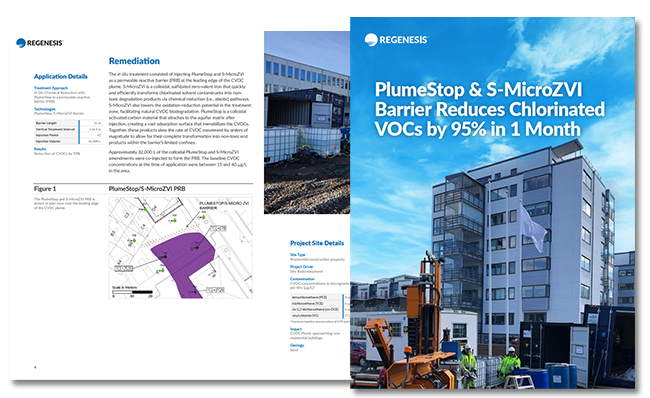
In Situ Treatment of Hexavalent Chromium Results in Site Closure
Case study highlights:
This case study focuses on the successful remediation of hexavalent chromium (Cr(VI)) contamination at a chrome plating facility in the Midwest of North America. Decades of ineffective pump & treat (P&T) operations led to the need for a cost-effective and rapid solution to achieve regulatory closure.
- Commodity ZVI and 3-D Microemulsion/CRS rapidly reduced Cr(VI) concentrations, achieving remarkable reductions within months.
- S-MicroZVI® and 3-D Microemulsion offered improved distribution and reactivity, addressing previous limitations in the remediation process.
- The use of S-MicroZVI® and 3-D Microemulsion led to a rapid 99% reduction in Cr(VI) concentrations, securing regulatory closure for a long-standing contamination case.
2m 55s reading time
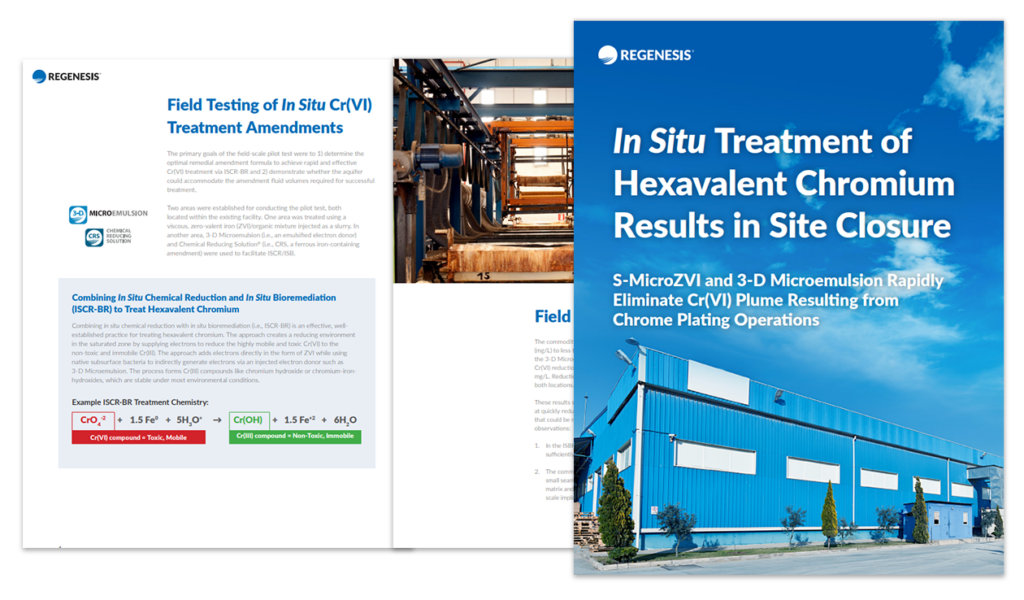
Treatment Solution for Large TCE Plume Saves Client $380,000
Case study highlights
At a former manufacturing facility high levels of chlorinated solvents had been released into the groundwater, creating a large plume extending to the nearby river. A combined in situ biogeochemical reduction solution rapidly mitigated the threat to river:
-
Large TCE plume effectively treated using combined technology solution from REGENESIS, including PlumeStop® and S-MicroZVI®
-
Accurate mapping of CVOC flux zones using FluxTracers® saves millions in project cost
-
Safe and efficient installation meets time and budget requirements
6m 38s reading time
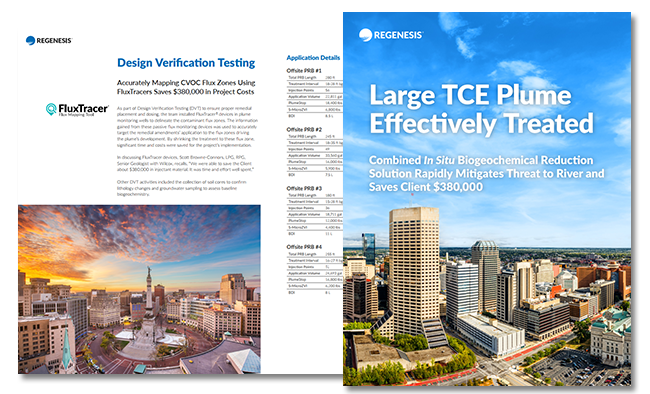
Combined Remedy Rapidly Achieves Targets to Address Chlorinated Solvent Impacts
Case study highlights
-
A multi‑faceted remedial solution mitigates CVOC contamination beneath an active business
-
Successful application overcomes challenging site conditions
-
Groundwater effectively treated using PlumeStop® and
S-MicroZVI®, expediting site closure
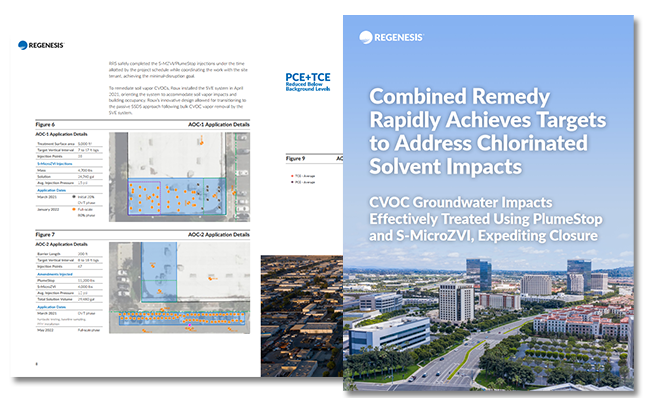
Achieving site closure for a large PCE plume in urban area
This case study reviews a former dry cleaner site in a town in Indiana, USA, where site regulatory closure was achieved after a large dissolved-phase PCE groundwater plume was successfully treated using PlumeStop, enhanced reductive dechlorination (ERD) amendments and S-MicroZVI from REGENESIS. Patriot Engineering, a leading environmental consulting firm, specified ERD as the most practical and economically viable method to effectively treat the large plume.
Patriot’s strategy to achieve closure was to significantly reduce the PCE plume and then to demonstrate plume stability through post-remediation monitoring. By combining remediation technologies from REGENESIS with a highly efficient and cost-effective remediation design, Patriot’s treatment approach eliminated the PCE plume. Subsequent performance monitoring and analysis completed by Patriot demonstrated plume stability, earning the site a No Further Action status from the state regulator.

Case study highlights:
- Closure achieved for a large chlorinated solvent plume in an urban area
- A challenging site: located in an urban area with access limitations
- PCE sources rapidly eliminated and plume efficiently treated using a suite of REGENESIS in situ remediation technologies
11m 14s reading time

 Americas
Americas Europe
Europe Français
Français Deutsch
Deutsch Italiano
Italiano Español
Español